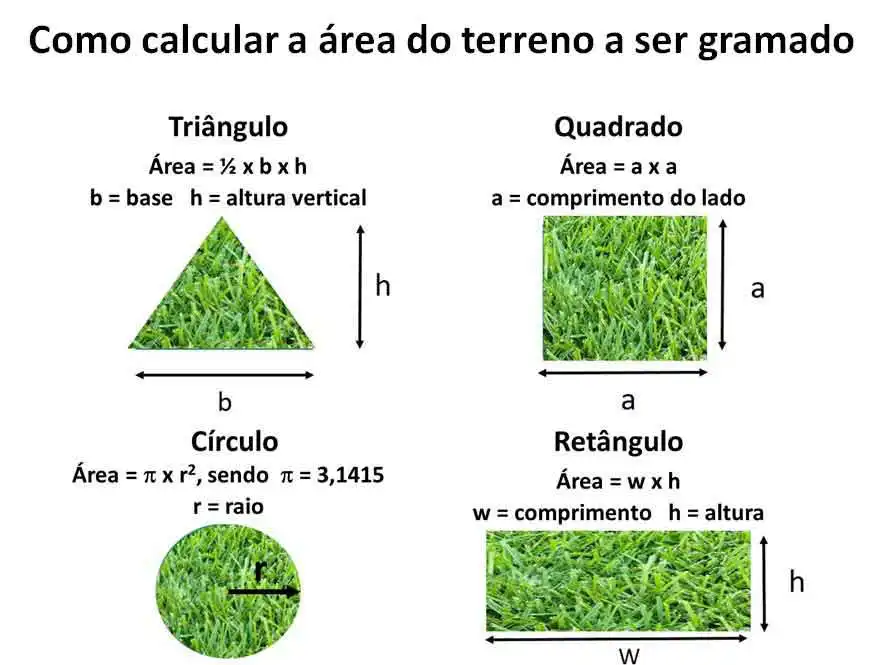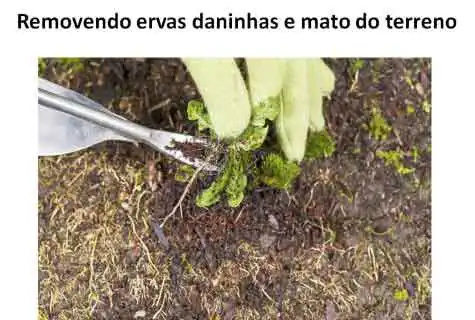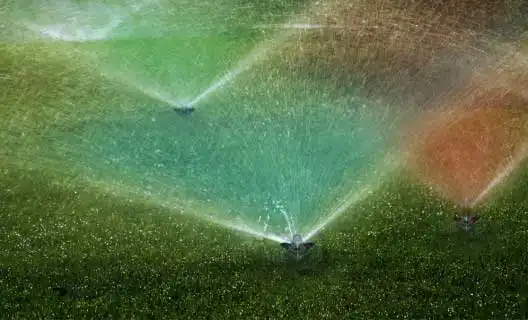*** Grama Esmeralda *** | *** Grama São Carlos *** | *** Grama Bermudas *** | *** Grama Santo Agostinho *** | *** Grama Coreana *** | *** Grama Batatais ***
Do you want to buy grass? You can ask for free quote by clicking here and filling in our exclusive Real Gramas quotation form. Please, note that this option is only for delivery within Brazilian territory.
(15) 3273-2644 (Itapetininga)
(15) 99630-5347 (Whatsapp)
(11) 3733-5989 (Office at São Paulo)
Easy 10 steps to plant grass and make the best lawn.
You may plant the grass in two ways: directly from seeds or placing the grass carpet tiles in the pre-prepared land.
Although the use of seeds is the cheapest choice, it requires a lot of time for the seed to germinate and grow. Furthermore, the growth of the grass may occur irregularly in an uneven way.
The use of grass carpet tiles is the quickest and the most efficient way. The tiles are pre-grown grass in an optimal soil, climate and environment so that the grass grow firmly, strongly and uniformly.
Here at Itapetininga city, which is located at the country side of the São Paulo State, we grow grass and cut them in carpet tiles of two sizes: 40 cm x 125 cm (16”x50”) or 40 cm x 62.5 cm (16” x 25”). These carpet tiles can be placed directly at the areas where you want to plant the grass.
In this page we will present a step by step manual on how to plant the grass in carpet tiles or carpet rolls.
We show below 10 steps on how to choose and plant your grass efficiently and to have a beautiful lawn.
These tips are valid for Emerald Grass, Carpet Grass (São Carlos), Bahia Grass (Batatais), Bermuda Grass, St Augustine Grass, and Korean Velvetgrass among others.
First Step
Check the size of the area where you will plant the grass.
Before ordering the grass, measure the area where the grass will be placed/ planted. It can be a residential and commercial garden, a large green area, a soccer field or any other sports field such as football, golf, polo, baseball and cricket. It can also be a slope instead of a flat land, and it can also be on side of ponds, rivers, roads and highways.
See the chart below on how to calculate the area of your land.

Legend of the figure: Title: How to calculate the area of the land you want to place your grass. Triângulo = triangle. Quadrado = square, Círculo = circle, Retângulo = rectangle, altura = height, raio = radius, comprimento do lado = lengh of side
Second Step
Choose the type of grass to plant
Choosing the type of grass is essential.
There are several types of grass for each kind of climate, soil, and need.
The most important questions to ask are:
- Does the area receive the incidence of sunshine the entire year?
- Are there many areas of shades?
- Does it rain a lot in the region?
- If it doesn’t rain, will you be able to water the area regularly?
- Is the area flat or a slope?
- The circulation of people will be high?
- Will it be a heavy trampled area such as a soccer or football field or playground?
- Is the soil of the area fertile?
- Will you manage to do the maintenance of the grass regularly (fertilization, trimming etc)?
For more information on grasses, please check our page at type of grass
If you prefer, do not hesitate to contact us directly. We will be pleased to help you and give you tips on how to plant your grass more efficiently.
Remember that a consultation of a local agronomist or an agronomist engineer that can check the area is the best option.
Third Step
Make your order
You may fill in our exclusive form by clicking here and you will receive a free quote for the grass you need.
When you contact us, have in hand the size of the area where you want to plant the grass and which type of grass you want to plant.
If you don’t know which type of grass is the ideal one for the area where you want to plant your grass, we can give you the correct orientation on which grass to choose. Please do contact us by phone or by email.
The grass is sold as carpet tiles or in rolls to make the planting process easier. However, it is of note that the Bahia Grass (Grama Batatais) is removed from the ground with a hoe, which generates tiles of irregular shapes.
The preparation of the soil presented on the following steps 4 to 6 below is very essential.
You must remember that, differently to other types of plants, the access to the ground cannot be done after planting the grass so that you won’t be able to correct the land and soil afterwards. Once the grass roots grow, the treatment, maintenance, and care should be performed differently.
Do ask a specialist every time you are in doubt.
Forth step
The soil preparation. Removal of residues and leveraging of the land.
Remove all kind of weed, rocks, debris, and garbage from the area you want to plant the grass. Try to leverage the land, keeping the area the most homogeneous as possible.
Ideally you must use a hoe or a specific machine to make gaps on the earth in order to rummage the land about 3 inch in depth to aerate the soil and brake down any big and hard piece of earth in the land.

Fifth step
Preparing the soil: fertilization
The fertilization of the soil is not always necessary.
However, in case the land where you want to plant the grass is poor, infertile or dry, it is recommended to fertilize the land in advance.
Preferentially, you may consult an agronomist or a soil specialist to analyze the land and check which nutrients the soil is deficient in, so that the correction can be done correctly.
In the state of São Paulo for example, the soil is predominantly acid. It means that the soil is weak and poor, and only the fertilization of the soil won’t work efficiently.
In case the soil is acid (pH below 4.0 or 5.0), the pH correction of the soil is indispensable before the fertilization and planting the grass.
Dolomitic and calcite limestone are the most used substances for the correction of the acidity of the soil. Besides, these materials supply calcium (Ca) and magnesium (Mg) which are indispensable for the plant nutrition, maximizing the effect of the fertilizers.
The dolomitic limestone is indicated for the correction of soil with calcium oxide (CaO2) and magnesium oxide (MgO2) deficiency.
The calcite limestone is indicated for the correction of soil with calcium deficiency. This material present a higher concentration of calcium oxide (CaO2) and low concentration (below 5%) of magnesium oxide (MgO2).
Special Tip: How can you measure the pH at home?
Below we present a DIY on how to measure the pH with material you find at home.
If you cannot find an agronomist or soil specialist to analyze your land, and if you don’t have a pH-meter in hand, we present a simple and effective way to check the pH of the soil if is acid or alkaline (basic). These tips won’t be able to tell you the exact pH, but it can give you a good idea how is the pH of the soil you want to analyze.
You must prepare the following materials:
- purple cabbage leaf, pan, cooker, sieve, coffee filter paper, cup of glass.
- Put some of chopped purple cabbage leaves in a pan with water and heat them in medium fire until they boil. You must put the same quantity of water compared to the quantity of the chopped cabbage. Another option is to put the cabbage leaves in a blender or a food processor and add boiling water over it.
- Turn the fire off and wait for the water to reach room temperature.
- Sift the material and filter the liquid using a coffee filter paper to separate and remove all solid residues.
- You may add some ethanol and save it for a longer time in a fridge.
- In parallel, take one cup of glass of the soil you want to analyze.
- Put the soil in a bigger flask and add two cups of water. Preferentially, use distilled water, the same water used to fill in car batteries or car radiators.
- Mix the material well and keep it resting for at least 1h.
- Filter the soil with a coffee filter paper to remove all solid residues.
- Measuring the pH of the soil:
Add few drops of the liquid you got from the cabbage preparation to the liquid you obtained from the soil.
The final color will tell you the pH of the soil.
- The color table below indicates the pH of the soil. We recommend you to analyze the color during the day or under a fluorescent (white) light.
|
Color |
pH |
|
Red |
2.0 |
|
Red Violet |
4.0 |
|
Violet |
6.0 |
|
Blue violet |
7.0 |
|
Blue |
7.5 |
|
Blue-green |
9.0 |
|
Bluish-green |
10.,0 |
|
Green |
12.0 |
In case the soil of your land is acid (pH below 7.0), the dolomitic limestone can be applied in a moderate amount of about 300g/m2 (1000lb/in2). You can repeat this application after 3 or 4 months after planting the grass.
Please, note that high amount of calcium in the soil is not good for the land and for the grass. The ideal proportion should be about 3 to 5 times of Calcium over the Magnesium.
Sixth step
Land preparation: fertilization
Before planting the grass, it is not necessary and we do not recommend nitrogen fertilization. Nitrogen doesn’t last for a long time in the soil and the grass won’t be rooted enough so that the grass won’t absorb the nitrogen in this initial phase.
We recommend you to use either the organic fertilizers or the chemical fertilizers to prepare the soil before planting.
The chemical fertilizer is normally sold as NPK fertilizer (N = nitrogen, P = phosphorus, K = potassium) and it can be found in several formulations.
Before planting, we recommend the use of formulations that does not contain nitrogen. It is indicated with a “00” in the “N” - nitrogen composition. For example, it will be indicated as 00-10-10, 00-3-16, 00-14-08 etc.
For more information, please check our page on How to Fertilize the Grass
Seventh step
Unloading the grass
Grass is transported as carpet tiles (pallets) or rolls.
When the truck arrives at the site, unload the grass and put them close to where it will be planted.
We recommend unloading with a help of at least two people at the site.
Plant the grass immediately.
Normally, we schedule the delivery to be at the morning period, so that, if you cannot plant immediately in the same day, you should plant the grass in a maximum of 24h to avoid the grass to damage, deteriorate or even brake (for grass sold as rolls).
Do not throw water on the grass rolls before planting.
Eighth step
Planting the grass
Place the grass carpet tiles or rolls aligned one besides the other.
You may also use a line or rope to help on alignment.
With the exception of Bahia Grass (Grama Batatais), all other grasses are sold as carpet tiles or rolls of the same size, which helps on the planting process to be more efficient and quick.
You may place each tile side by side without much spaces between the tiles.
You may use the small leftover pieces of grass to plant on occasional empty spaces between the tiles.
Ninth step
After planting the grass: covering with earth
After planting the grass, we recommend to cover the grass with earth.
When needed, the occasional empty spaces between the tiles can be filled with earth.
Do use good quality fertilized earth with no weeds, insects or debris.
This coverage will help to keep the humidity of the grass which will allow the grass to develop and root more quickly and efficiently.
Tenth step
Watering after planting the grass
Water irrigation of the grass is recommended at least twice a day (once in the morning and once at the end of the day) in the Summer time and once a day in winter (in the morning, preferentially) for at least 15 days after planting.
Later on, we recommend watering the grass at least once every 2 to 4 days.
Do not soak the grass. A good indication to check if the grass is watered enought is to touch the earth/lawn and feel that the grass is humid.
After rooting, watering can be done sporadically, but we recommend a frequent watering to keep the grass always beautiful and vivid.

Please note that even after planting, constant watering and care, it is normal that at the short / medium term, 10 to 20% of the grass carpets will not grow at your land and dries. Remember that the soil in your land has no uniform nutrient distribution. Therefore, there is no point in trying to put another new grass carpet in place. The chance of their growing will be very low. However, you don't have to worry about. In few months, the grass that has taken up well and is adapted to its new terrain and soil will gradually cover the area of the carpets that it did not grow. If it is an entire area that the grass have not been grown, we recommend that you look for assitance of a local agronomist. It is possible that the entire area may have soil problems such as lack of specific nutrients, the area is too shaded and there is not enough sunlight etc.
Again, if you have any additional doubts, we recommend you to ask a local agronomist.
Please do call us using the numbers below for a free quote of any type of grass.
+ 55 (15) 3273-2644 (Itapetininga)
+ 55 (15) 99630-5347 (whatsapp)
+ 55 (11) 3733-5989 (Office at São Paulo)
If you plan to planting Emerald Grass, we have specific tips for you at our page: Como plantar Grama Esmeralda
If you plan to planting Bahia Grass, you may see more tips at our page on How to plant Bahia Grass

 (15) 3273-2644
(15) 3273-2644
 (11) 9 9009-1813
(11) 9 9009-1813
I wanted to ask if you could send me a quote of Emerald Grass to the country side of Minas Gerais at the city of Caxambu. I am interested to buy 2000 mts. Thank you in advance.